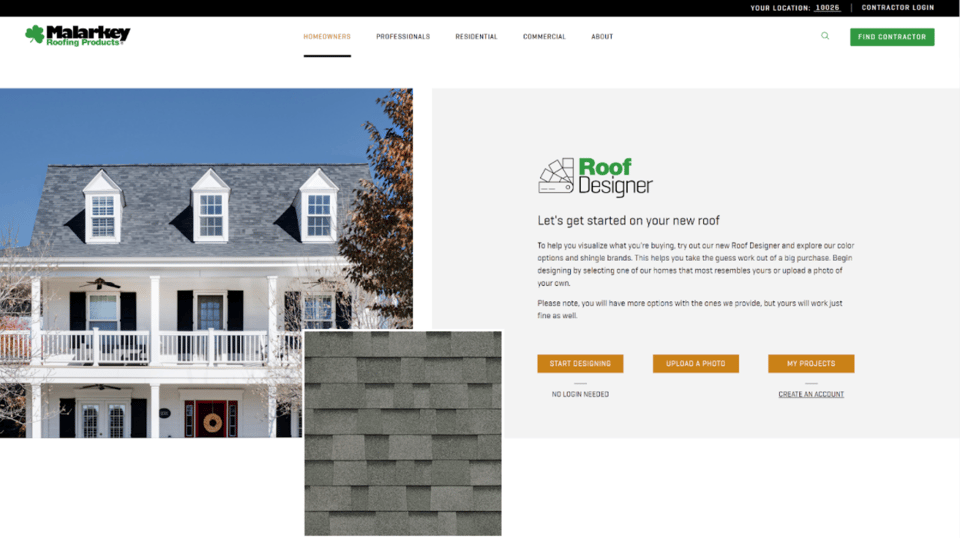Venveo Blog – An Introduction to Marketing Automation for Building Materials Companies
Lead generation is a critical component of digital marketing for building materials companies. An effective lead generation strategy is often built around content. For this reason, we reached out to Deanna Murphy, Director of Strategy for Venveo, to provide examples of content ideas that can help building product companies generate more leads in 2023.
Experienced marketers have learned that it’s almost always better to give than to receive—especially on your website. Brands have the opportunity to offer valuable knowledge through content marketing and lead generation materials that speak to their audience at each phase in the buyer’s journey.
With lead gen content, your audience needs to give their information in order to access it, usually their name and email. This helps you collect new leads while providing value to your audience, which has the added bonus of creating trust with them — if your lead gen is helpful. However, be careful to not ask for too much information when gating your content. The more information they have to provide, the less likely they are to provide it.
There are a lot of lead gen options available, but picking which one to use depends on where your audience is in the buyer’s journey, also known as the sales funnel.
Option 1: Lookbooks
If you’re not sure how to get started and have a product that is mostly aesthetic in nature (flooring, siding, pavers, railing, etc.), lookbooks are relatively easy and well-received. Lookbooks show your audience different ways your product can be used and how beautiful it can look. They are a great tool to target an audience that’s still in the awareness phase.
When it comes to choosing a lookbook, the key is to have high-quality images of final installations. While this type of content is aimed at the final buyer (such as the homeowner), it’s also useful for builders, designers, architects, and contractors. They can use your lookbook to help showcase and sell your product to their clients.
Option 2: Technical Downloadables
Technical downloadables can take a little longer to create and be more expensive, but they can go a long way in making professionals feel comfortable and lift the burden off the technical teams. These are good options for audiences in the planning or buying phase.
Technical downloadables can include a detailed installation manual, in-depth instructions on how to measure to ensure they buy enough of the product or detailed tech specs on individual products. The key to technical downloadables is to ensure that you include enough detail and explanations that the reader can follow easily. Without the right amount of instruction, the reader could get frustrated and decide not to use your product.
Option 3: Guides
Guides are a great way to showcase helpful information to your audience such as what they need to know about your product category (ex: “A Guide to High Traffic Flooring”), simple how-to guides (ex: “How to Design a Patio Space”) or a comparison guide (ex: “Granite vs. Quartz Countertops”).
Depending on the content, guides can be used in the awareness, researching, or comparison phase.
Option 4: Case Studies
Case studies are an excellent way to create trust around your product. They showcase successful projects that other professionals (or homeowners, depending on your audience) in the industry have completed. They serve as social proof, as well as a testimonial. Case studies are a great way to target potential customers in the comparing phase.
When creating case studies, be sure to include any quantifiable information you can add (time saved, money saved, reduced utility bills, etc.). It’s also great to include quotes from the installers/builders and the owner on the ease of installation and the end result of the completed project.
Option 5: Quizzes
If a downloadable is out of the question, quizzes are a great way to offer value and guidance. They can also usually gather the user’s email so they can be nurtured.
Quizzes can be used for any phase of the sales funnel. If you are using a quiz as an estimator tool, it would target people in the buyer phase. If it’s helping pick the right product for a project, it’s more likely to target people in the planning or comparing phase. If it’s helping pick the best design aesthetic for a project, it’s more likely targeting people in the awareness or researching phase.
A product-picking quiz is a great option for any building products manufacturer. It can help customers find the exact product they need for their project. At the end of the quiz, have them enter their email address to see their results and email the results to them if they want to look into them later.
Not Sure Where to Start?
If you don’t have any lead gen pieces created yet, start by creating a grid like the one below. List your audience types across the top and the phases you want to target down the left.
| Installers | Homeowners | Architects | |
| Awareness | |||
| Researching | |||
| Comparing | |||
| Planning | |||
| Buy |
Then, using the examples from this article, you can start brainstorming lead gen ideas for each area of the funnel, and don’t forget to check with your sales teams! They should be able to give you great insights into what resources prospective customers are looking for.
Click here if you need help creating a lead gen strategy that targets your specific audience, builds trust, grows brand awareness, and drives sales.




